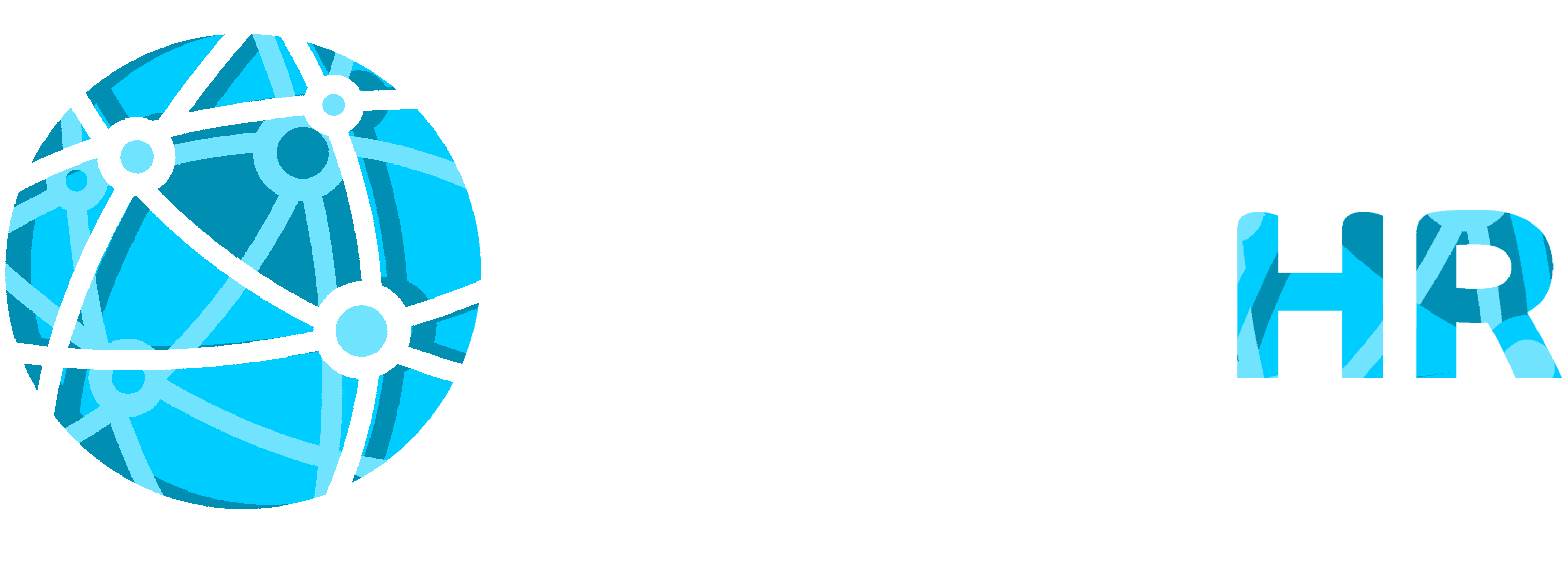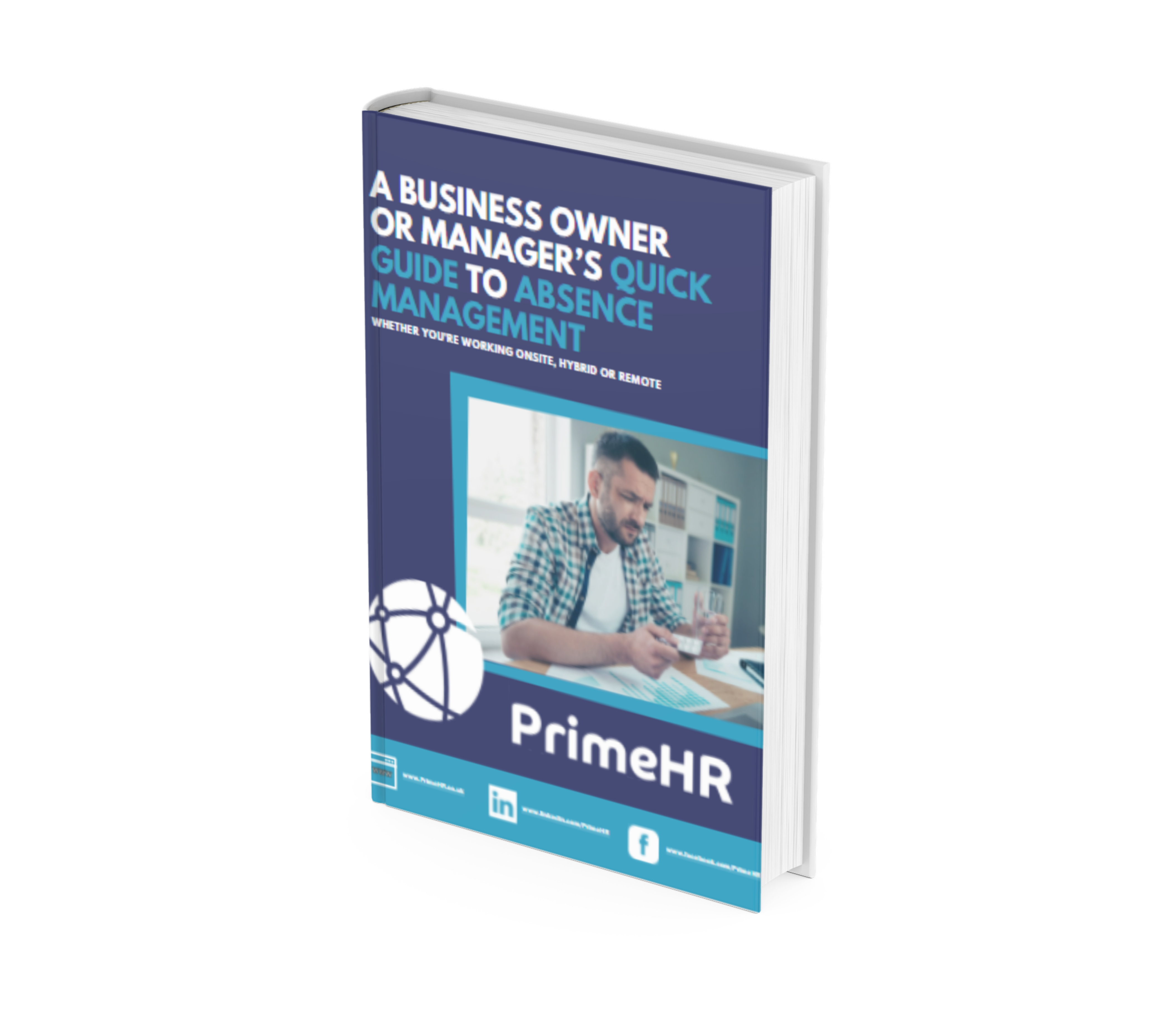Keep Up To Date
If you find our blog updates useful then consider subscribing to our newsletter for regular updates on UK Employment Law


Cookies
We require the use of cookies on our site to gather certain data to help us build our content. We also use cookies to assist in your user experience with some key functions and features of our system.
Our Policy
A BUSINESS OWNER OR MANAGER’S QUICK GUIDE TO ABSENCE MANAGEMENT

WHETHER YOU'RE WORKING ONSITE, HYBRID OR REMOTE
- The Effect Of Unplanned Absence
- Take a Look At Your Policy
- Recording Unplanned Absence
- The Cause Of Absence
- Ill Health Dismissal
- Need Some Expert HR Advice?
Absence - or attendance - management encourages you to look at the ways you can decrease the amount of unplanned absence that occurs in your business. We know that this type of absence is the most disruptive for a business, putting additional strain on team members and colleagues.
We say decrease, because you will never completely rid your business of unplanned absence. It’s unavoidable that from time to time your employees will need to take time off for illness (either their own, or someone in their care), injury, or even bereavement.
You may already have several policies that cover this type of absence or one leave policy that acts as a catch all. However it is usual to have a single absence policy for sickness as the legislation can be quite complex. We'll give you more information on this later in the guide.
That said, there are a series of things you can do to encourage or improve good health and well-being within your workplace; these play a crucial role in absence management, alongside the not-so-nice things, like disciplinaries or capability hearings for excessive or persistent long term absence, or those cases where you know your employee is taking advantage and playing the system.
THE EFFECT OF UNPLANNED ABSENCE
Not only is there a financial cost to unplanned absence (think sick pay, loss of productivity, and disruption), but it can also have a huge impact on the rest of your team, too.
When a member of your team is regularly off sick, it can cause the rest of the team to feel resentment towards that person. There will be feelings of dissatisfaction, increased stress (because, remember, it’s these people that will be picking up the slack), and frustration.
But high levels of unplanned absence can be a sign of more going on within your business than appears on the surface.
Are people off sick because they’re genuinely ill, or is it because they don’t feel competent at their job? Or maybe they are being bullied by a colleague? Perhaps your working environment is just too stressful or even toxic? Are they simply the wrong hire?
There’s a whole host of reasons that someone might be off work aside from being unwell. It’s your job to spot patterns or problems. Tracking sickness will help you to do that easily, but more on that later
TAKE A LOOK AT YOUR POLICY
When did you last review your sickness policy? Although the details may not have changed, you may have introduced new schemes that should be a part of it. It’s also important that you have things worded correctly, so that while employees know they’re entitled to time off when they’re unwell, they’re aware that the policy shouldn’t be abused. It can be a fine line to tread.
Include details of how sickness should be reported (should it be a call, a text, or will an email suffice?), when it should be reported (before 9am, for example), and who it should be reported to. You should also make it clear that you will record and measure data on unplanned absence.
You should explain in your policy any sick pay entitlement within the business, as well as what happens with frequent absence or an abuse of sick leave. This should include when you might feel it is appropriate to take more formal or disciplinary action, in relation to their capability to perform in their role.
It’s also a wise idea to explain that you will conduct return-to-work interviews with everyone, this helps establish if there are any reasonable adjustments or support required to help keep them well in the workplace. In cases of extended sick leave, it may be appropriate to re-onboard employees to help them settle back into their role more easily on their return.
Your policy should explain what may happen in cases of unauthorised absence, too. That is to say, when someone doesn’t show up for work unexpectedly, and doesn’t notify anyone. Of course, there may be causes, such as a medical emergency, where it is not possible to let you know immediately, but if there is no reasonable excuse as to why someone hasn’t showed up for work, it may be appropriate to take disciplinary action.
Before you can start a disciplinary procedure however, you must conduct a full investigation into the absence, and you must always act fairly and reasonably to avoid potential unfair dismissal claims
Ensure that a copy of your sickness policy is accessible to everyone within the business, and, that if you make any amendments to your current policy, all employees are notified and sent a copy of the updated version in reasonable time.
RECORDING UNPLANNED ABSENCE
It’s a really good idea that you record any instances of unplanned absence in your business, rather than waiting for someone’s absence to become a problem. You can do this easily by setting up an employee in the PrimeHR EMS.
By doing this, it means you’ll be able to spot any patterns in absence, and therefore highlight any problems long before you might do otherwise. For example, perhaps someone takes every third Friday off sick, or maybe one of your teams has a much higher rate of absence than the others. When you record this data, it will become really easy to identify areas of concern, and give you a better opportunity to tackle and resolve potential problems.
One method that you may use to record and monitor absence is by the number of days or instances a person is off sick. This is one way that helps you formally manage any absence to deal with areas of concern more easily.
Simply put, you record instances of absence x days absent over 52 weeks. This means that someone who takes frequent short periods of absence will be highlighted enabling you to act quickly.
You can apply your own threshold measures to your policy, depending on the potential impact absence will have on your business.
Here’s an example:
If your policy had a threshold of either 4 instances of absence or 12 days sickness before it triggered a formal process, then lets look at the following:
Lucy has three instances of illness over a year, and takes two days off for each.
• 3 (instances) x 2 (days off) = 6 but would trigger a formal process if there is one more instance of absence.
Simon has one instance of sickness, but takes 7 days off.
• 1 (instance) x 7 (days off) = 7 if Simon had another 5 days sickness or 3 more instances then he would trigger the formal process.
In this case, while Simon has taken more days off sick, Lucy has been off more frequently because she’s had more instances of illness.
It’s worth noting, for those employees with disabilities or long-standing health issues, you need to make any reasonable adjustments necessary, otherwise it can be seen as unfair treatment. As always you need to assess each case individually and act reasonably when assessing the results.
THE CAUSE OF ABSENCE
While there will certainly be a genuine reason behind most sick days taken, it’s important that you look at the cause behind each absence in your business. Failing to do so could lead to bigger issues within the company that are more difficult to fix.
Is absence due to illness or injury? Is it likely to be long (more than 4 weeks) or short term? Perhaps someone is taking time off to care for sick children, or parents, or a partner? Maybe someone is being bullied by a colleague? Find out whether your employees need additional support from the business and your managers, as other policies may apply.
You should also be mindful of the ‘isms’.
You probably already know about absenteeism. That’s when someone habitually takes sick leave.
Then there’s leavism, which is the opposite. It’s where people refuse to take their annual leave, or work instead of resting when they do. A massive three quarters of people have seen leavism taking place in their workplace, and it’s usually most noticeable when people continue to check and reply to emails, check-in on projects, or take workrelated calls while off.
These employees feel they’re ultra-committed to the job, but, in reality, it is extremely bad for their health and wellbeing, and will soon lead to burnout and other health issues if not carefully tackled by management.
When you get it right, you should get a great return on investment.
Finally, there’s presenteeism, which is where an employee continues to present at work, even if they are genuinely ill. Not only is this bad for their health and wellbeing, but it also puts others at risk of illness, which could cause more problems for your business.
It’s really important that you and your managers spot any of the ‘isms’ and delicately broach the subject with employees where necessary.
ILL HEALTH DISMISSAL
On occasion, it may be your last resort to dismiss an employee on the grounds of ill health. However, it’s vital that this is a last resort measure only, and you take reasonable steps to help get your employee back to work first.
These steps may include you approaching their GP for a report on their health (with your employee’s permission), arranging an occupational health assessment, or making reasonable adjustments to enable them to do their job.
In some cases, this may not work, and it may be your only option to dismiss your employee. In these cases, it’s important to act with sensitivity and fairness. We would strongly recommend taking our expert advice and following ACAS rules on this one.
The Equality Act 2010 states that a person must not be discriminated against because they have a disability, or someone thinks that they do, or because they are connected to someone with a disability.
5 PRACTICAL WAYS YOU CAN REDUCE ABSENCE
As a business owner or manager, you can implement things that will help to minimise absence within your business, and it’s easier than you might imagine. Here are 5 of the best…
1. Be more flexible
It’s something we’re all used to these days, but giving your people a little more flexibility can mean the difference between someone calling in sick with a sniffle, or them working from home instead.
It could mean that someone works from 7am - 3pm, so that they can still collect their children from school.
These days, people simply don’t have the time to deal with all of their responsibilities in life. Some of the sick days that people take may simply be used to ‘catch up’. So, offering more flexibility, whether that’s bringing in a hybrid working policy, or flexi-time, could dramatically decrease the number of sick days people use.
2. Be clearer with your guidelines & policies
Your people should know that, while you don’t expect them to come into work with the flu, taking a day off for a trivial issue is also unacceptable.
Look at ways you can support your team, such as working from home with a bad back, or giving them time off for medical appointments, so they don’t use a whole day sick leave for a 20-minute appointment.
3. Introduce a wellbeing initiative
Looking out for your peoples’ wellbeing can reduce stress and increase fitness. It’s a no-brainer.
If you can afford a grand scheme, like gym memberships, or subscriptions to mental health apps, go for it, but likewise, you don’t have to spend a fortune to make a difference. Encourage people to have catch up meetings while taking a walk, swap the office doughnuts for a fruit bowl and save the cakes for special occasions only.
You could even create a company challenge, to see which team can walk, swim or cycle the most miles each month. Little things can have a big impact.
4. Introduce better communication
Could it be that people take sick leave because they’re unaware of their options?
Schedule regular 121 meetings to open lines of honest, confidential communication between employees and managers. And make sure that, if anyone is showing signs of poor mental or physical health, you approach them to see how you can help.
5. Train your managers
Your managers are the frontline in keeping your people well and healthy. They have a lot to deal with, so make sure they’re equipped with the tools they need to identify and tackle any issues in the most sensitive manner. A good balance is crucial to ensure your business isn’t affected with presenteeism or absenteeism.
As always, a careful and measured approach is in your best interests when it comes to dealing with absence. If you’d like any further advice, we’d be glad to help. Just give us a call to arrange a conversation.
NEED SOME EXPERT HR ADVICE?
If you’re dealing with employee absence or not sure what to do, we’d love to help you. Simply give us a call on 01158 372 772 or drop us an email to arrange a conversation.
You can also sign up for our Employee Management System FREE to all members at PrimeHR.co.uk.
We're here to help your small business grow! And here when you need us most.